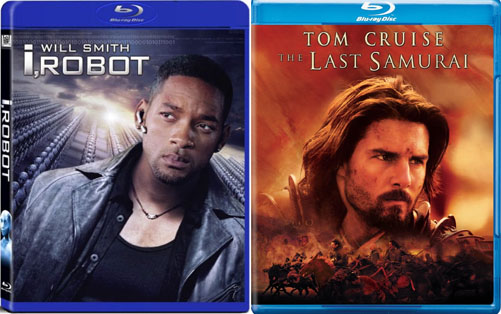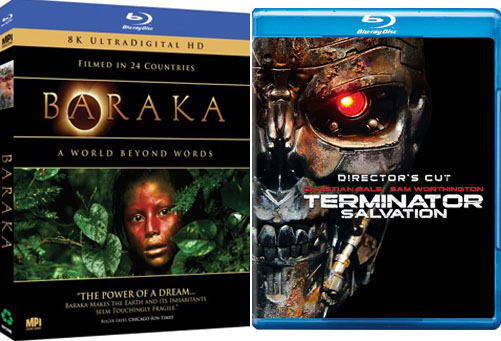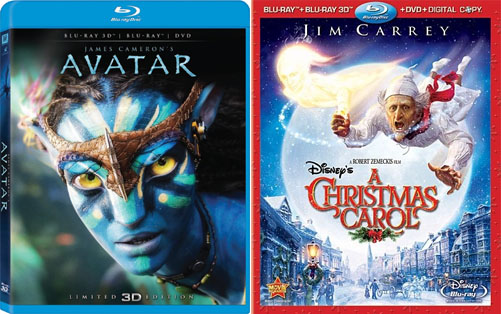Toshiba 65L9300U: A 4K HDTV With HDMI 2.0 Support
With Ultra HD monitors becoming more prolific, we thought it was time to check out a 4K HDTV. Toshiba sent us its 65-inch L9300U LED panel. This TV offers 3D and cloud features in addition to a high pixel count. We put it through its paces in this review.
Using Toshiba's 65L9300U
In my profession, I’ve had the opportunity to test and watch hundreds of different displays, both projectors and HDTVs. In that time, I’ve only encountered a handful that I would call compelling. Toshiba's 65L9300U is the newest addition to that very short list.
For all viewing, the set is calibrated in its Movie mode. DynaLight is turned on and Dynamic Contrast is set to Low. Even though those options negatively impact the gamma results (coming up on page seven), I felt the image had more pop and detail.
Toshiba sent over a laptop loaded with native 4K content, so I began with that. The video was a typical tradeshow-style collection of bright, colorful content loaded with detail and high contrast. To say it looked fantastic would be an understatement. Even sitting four feet away, I couldn't see any pixilation or artifacts. Someday, movies and TV shows will be encoded this way, and frankly, I can’t wait. Watching native content on a 4K display is truly a glimpse into the future.
Unfortunately, for the rest of my viewing, I had to settle for good old 1080p-encoded Blu-rays. I chose a group of discs that tested the 65L9300U in various ways.
Standard Content
I, Robot is an excellent example of a film that’s been subjected to a little too much digital scrubbing. On most HDTVs, it takes on a sharp and smooth appearance due to CGI that’s not quite up to the latest standards. This TV, however, brings back some of the film grain, making the movie look a little more real. The computer-generated elements were more obvious, but the noise reduction inherent in the transfer wasn’t quite as obnoxious.
Moving on to a truly poor transfer, I tried out The Last Samurai. This disc has many noisy scenes and even some macro-blocking artifacts in the mix. During the first battle sequence, when the forest is filled with the mists of dawn, the flaws are quite distracting. With the 65L9300U’s noise reduction set on Low, the mist looked essentially perfect. Toshiba's HDTV cleaned up this Blu-ray better than any display I’ve seen previously. And it did so without flattening the image.
Moving to the opposite extreme, I dropped Baraka into the player. This disc represents the ultimate film-to-video transfer. Shot in 70 mm and scanned at 8K resolution, there is no CGI of any kind used during the creation process. What you see is exactly what passed through the original cameras. This Blu-ray is stunning-looking. It can't match native 4K content, but it comes darned close. If Toshiba wants to demonstrate the scaling abilities of this set, I can’t think of better demo material.
Get Tom's Hardware's best news and in-depth reviews, straight to your inbox.
I finished up the 2D evaluation with Terminator Salvation. While it doesn't lack sharpness or detail, the movie's monochromatic color palette can make the film look flat and lifeless on displays with poor contrast or color resolution. Fortunately, that's not the case here. I can say confidently that the 65L9300U will make your 1080p content look better across the board.
Stereoscopic Content
3D is a prominent feature of the 65L9300U, and we were eager to compare its passive solution with the active technology found on first-generation 3D TVs. On a 1080p display, the pattern retarder effectively halves the resolution. If you sit close enough, you can see the horizontal line pattern on the screen. With the extra resolution available from a 4K display, the loss is completely mitigated. Plus, there is almost no light blockage from the passive glasses (whereas active shutter glasses cut brightness by as much as 80 percent).
No 3D display evaluation is complete without watching Avatar. From the first scene, we knew we were seeing something special. The depth of the effect is tremendous without looking unnatural. And since there’s virtually no loss of brightness, the image pops in a way that can’t be duplicated in Imax 3D. Without question, I'd call this the best 3D implementation I've ever seen. And you can sit as close as you like; you won’t see pixilation or resolution loss.
Our favorite 3D torture test is Disney’s A Christmas Carol, which is loaded with dark murky material that turns into a big black blob on many displays. Thanks to the extra light output offered by Toshiba’s passive 3D technology, it looks better than ever. The wrinkles on Scrooge’s face are especially well-rendered. If 3D looked this good when it first appeared on the market, we might all be watching TV this way.
One last note on the 3D experience: this TV can convert 2D images to 3D. It's not going to replace native 3D content, but the 65L9300U does a fairly convincing job of bridging the two modes. In fact, sports look pretty cool in stereo, as do action films. There are options in the Quick Menu for adjusting depth. That’s something you’ll want to tailor to personal preference for different content.
Cloud Interface
The Cloud TV interface is identical to what we saw from Toshiba's 50L7300U, and it suffers from the same sluggishness. We asked for more information about the hardware platform enabling this functionality, but Toshiba wouldn't share that information. Company reps did say the software is HTML5-based. Still, though, it's slow to respond to commands from the remote and keyboard.
In my opinion, the suite's best app is its Netflix viewer, which is useful for browsing the service's vast library of content. Moreover, image quality is quite good.
Rather than repeating our assessment of the Cloud TV experience, I'll again refer you back to Toshiba 50L7300U Review: A 50-Inch LED HDTV With Wi-Fi.The 65L9300U’s interface works identically. Really, the best streaming solution is found in external devices like Roku or Apple TV, though. And with the 65L9300U’s WiDi receiver, you can turn your compatible laptop into a content aggregator if you want.
Windows Usability
After our last HDTV review, some of our readers asked us to comment on the set’s usability as a computer monitor. To oblige this, we connected a natively-1080p Windows 8-based laptop via HDMI. When you mirror displays, you're stuck with the lower-res screen's output. As we expected, running the 65L9300U at 1080p makes it look soft. It works fine as a presentation display with viewers several feet away. But up close, it isn't practical.
Bumping the output up to 3840x2160 is another experience entirely. Suddenly, you have a 65-inch display that can literally become a desktop monitor. The main limitation becomes positioning yourself so that the entire screen is in your field of view. Even three feet away, the image is sharp and you aren't distracted by pixel structure. The TV does have a PC mode. However, the desktop image looks better in Movie mode after a full calibration.
Remember that the 65L9300U only has HDMI inputs. With the latest firmware, they support version 2.0’s 60 Hz refresh rate. But your graphics card needs HDMI 2.0 support as well. Otherwise, available bandwidth limits the connection to 30 Hz, making on-screen movement jerky enough to be bothersome. Neither AMD nor Nvidia has provided guidance on adding HDMI 2.0 support yet.
Current page: Using Toshiba's 65L9300U
Prev Page OSD Setup And Calibration Next Page Measurement And Calibration Methodology: How We Test
Christian Eberle is a Contributing Editor for Tom's Hardware US. He's a veteran reviewer of A/V equipment, specializing in monitors. Christian began his obsession with tech when he built his first PC in 1991, a 286 running DOS 3.0 at a blazing 12MHz. In 2006, he undertook training from the Imaging Science Foundation in video calibration and testing and thus started a passion for precise imaging that persists to this day. He is also a professional musician with a degree from the New England Conservatory as a classical bassoonist which he used to good effect as a performer with the West Point Army Band from 1987 to 2013. He enjoys watching movies and listening to high-end audio in his custom-built home theater and can be seen riding trails near his home on a race-ready ICE VTX recumbent trike. Christian enjoys the endless summer in Florida where he lives with his wife and Chihuahua and plays with orchestras around the state.
-
Someone Somewhere Argh. Why do people still make TVs with rear-exit connectors? That was the #1 hardest to find criteria last time we got a new one.Reply -
SteelCity1981 Toshiba still holding onto the 3D in their TV's. I got caught up in the hype and bought me a 3D TV two years ago and honestly I have only used it maybe 4 or 5 times if that. It's something now that I look back on I could have really done without and saved money on a regular HDTV, but live and learn. a cheaper non 3D version of this would be nice. I, like most people can do without the 3D function on a TV, esp if it will reduce the cost on the TV itself. It is nice to finally see a 4k TV come with HDMI 2.0 support, something that 1080p TV's don't need but 4k do in order to take full advantage of it by allowing 60fps.Reply -
cats_Paw Untill we get 4K contenent or GPUs can manage 4K resolutions in AAA titles with highest settings possible, 4K makes as much sense as a fast car in a 50 Km/h town.On the 3D matter, it does look cool on a projector if you get a 120+ inch screen, but in tvs, it looks like a gimick to me.Now... The HDMI improvment is something I want. Ive been wanting Full HD 60Hz 3D for a long time, and it seems 3D has been so unpopular that it didnt even make sense to invest in improving bandwidth.Reply -
Someone Somewhere You can do 1080p120 (equivalent to 60Hz 3d 1080p) over HDMI 1.4a easily... same bandwidth as 1440p60.Reply -
alchemy69 4K TVs are bought by the same people who buy $100 Monster hdmi cables because "they give a better picture".Reply -
Someone Somewhere Actually, 4K TVs can bring a better picture. Especially if one has 4K content, or is viewing pictures or text.Reply
Monster cables are definitely crap though. -
TheDane ReplyArgh. Why do people still make TVs with rear-exit connectors? That was the #1 hardest to find criteria last time we got a new one.
Argh. Why don't people use a cheap angled adapter. -
TheDane Like this: http://www.amazon.com/s?ie=UTF8&page=1&rh=i%3Aaps%2Ck%3Ahdmi%20angle%20adapterReply


